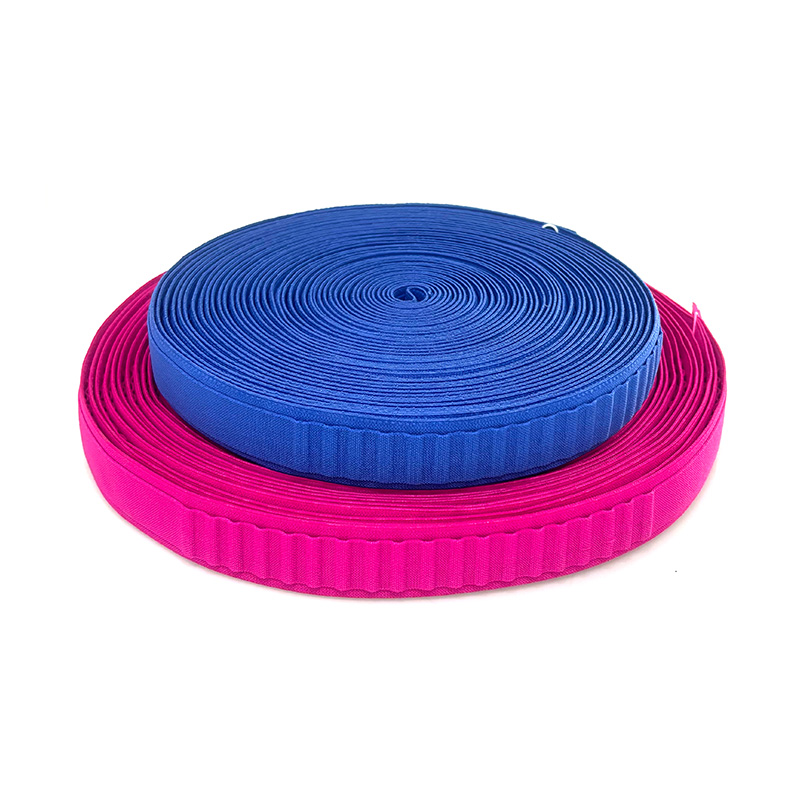Industry
 By Admin
By Admin
Key Factors That Affect The Durability Of Elastic Materials
Elastic materials are widely used in various industries and products, ranging from intimate apparel to home furnishings. The ability of these materials to maintain stretch and shape over time is essential for both comfort and function. Durability in elastic is not determined by a single factor but by a combination of material quality, usage conditions, and care practices. Understanding these influences can help ensure that products such as bra band elastic, clothing elastic straps, and mattress elastic straps remain reliable for longer periods.

One of the primary elements influencing the lifespan of elastic is the raw material composition. Natural rubber, synthetic fibers, or a blend of both can be used in production, each offering different resistance to wear and environmental exposure. For example, bra band elastic often uses blends that balance softness against the firmness needed to maintain support. Meanwhile, clothing elastic straps may be designed with a higher proportion of synthetic fibers to resist repeated stretching in sportswear or outerwear. In bedding applications, mattress elastic straps are typically engineered for steady tension over long durations without losing grip.
Environmental conditions also play a major role in the durability of elastic. High humidity, exposure to sweat, and temperature fluctuations can all degrade elasticity. In garments, bra band elastic can be particularly sensitive to heat from dryers or direct sunlight, which may cause fibers to break down prematurely. Clothing elastic straps worn outdoors can also weaken when exposed to UV rays for extended periods. Similarly, mattress elastic straps may lose resilience if stored in damp or unventilated environments, allowing mold or mildew to damage fibers.
Frequency and intensity of use are equally important considerations. Elastic under constant high tension will naturally wear out faster than elastic used intermittently. This is why bra band elastic in everyday lingerie may stretch out sooner compared to special occasion pieces. For clothing elastic straps, frequent movement, washing, and stretching put added strain on the fibers. In the case of mattress elastic straps, the consistent pulling and securing of bedding over weeks or months can advance to gradual loss of elasticity, especially if the straps are overstretched during use.
The manufacturing process also has a lasting impact on durability. Proper weaving or knitting techniques, even tension in production, and secure edge finishing all contribute to how well elastic performs over time. Bra band elastic made with reinforced edges can better resist fraying, while clothing elastic straps that are double-stitched in place will hold their shape more effectively. For mattress elastic straps, quality stitching and secure attachment points ensure that the elastic can handle repeated stretching without detaching or unraveling.
Care and maintenance are often underestimated but have a significant effect on how long elastic lasts. Gentle washing in cool water and air drying help preserve fiber integrity. Overly hot water or harsh detergents can weaken elasticity. Bra band elastic benefits from handwashing or placing garments in a protective laundry bag to reduce stress on the fibers. Clothing elastic straps should be kept away from bleach or fabric softeners that can break down material over time. For mattress elastic straps, occasional cleaning and avoiding excessive pulling during use will help maintain their tension and strength.
Storage is another factor that directly influences lifespan. Elastic should be kept in a cool, dry place away from direct sunlight. Folding or twisting elastic for long periods can create permanent creases that weaken the material. By storing bra band elastic products flat and uncompressed, you can maintain their natural stretch. Hanging garments with clothing elastic straps prevents distortion, while mattress elastic straps should be stored loosely coiled rather than tightly wound to avoid overstretching when not in use.
The durability of elastic materials depends on the combination of material choice, environmental exposure, usage habits, production quality, and maintenance practices. Whether in intimate apparel, everyday wear, or home textiles, the right approach to selection and care can extend the usefulness of bra band elastic, clothing elastic straps, and mattress elastic straps. By understanding and managing these key factors, manufacturers, retailers, and end users alike can ensure that elastic products maintain their function, comfort, and appearance for as long as possible.



 English
English Español
Español عربى
عربى Tiếng Việt
Tiếng Việt

